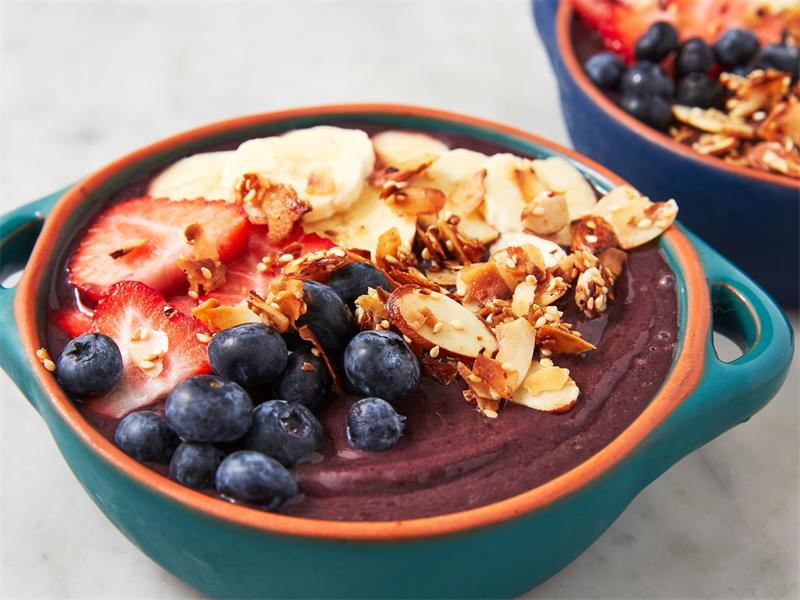Contents
What are Processed Foods?
Processed foods are any type of food that has been altered in some way during its preparation. This can include adding preservatives, flavorings, or other chemicals to the food.
Processing can also involve removing nutrients and fiber from whole foods, such as grains and vegetables. Processed foods have become more prevalent in today’s society due to the convenience they offer.
They can be found in nearly every grocery store and are often marketed as “quick and easy” meal options for busy families. Unfortunately, this convenience comes at a cost to our health.
The Negative Health Effects of Consuming Processed Foods
The negative health effects associated with consuming processed foods are numerous and well-documented. One of the main risks is an increased likelihood of developing chronic diseases such as obesity, heart disease, and diabetes.
This is because many processed foods are high in calories but low in nutrients, which means that they contribute to weight gain without providing the necessary vitamins and minerals that our bodies need. Processed foods also have the potential to lead to nutrient deficiencies and imbalances.
For example, many processed grains have had their fiber removed during processing which can lead to bowel irregularities over time. Another danger of consuming processed foods is their impact on our mental health; studies have linked diets heavy on sugar with depression in young adults [cite].
Overall, it is clear that processed foods pose a significant risk to our health over time if consumed regularly in large enough quantities. In order to protect ourselves from these risks it’s important that we educate ourselves on how best we can avoid them by choosing healthier alternatives whenever possible – which we’ll dive into later on!
The Risks of Consuming Processed Foods
The Link Between Processed Foods and Chronic Diseases
We’ve all heard about the dangers of consuming too much-processed food, but what exactly are the risks? One major concern is the link between processed foods and chronic diseases such as obesity, heart disease, and diabetes.
Studies have shown that individuals who consume high amounts of processed foods are at an increased risk for developing these diseases. One reason for this association is that many processed foods are high in calories, unhealthy fats, and added sugars.
These ingredients can contribute to weight gain, which is a major risk factor for chronic diseases. Additionally, many processed foods lack important nutrients such as fiber and vitamins that are necessary for good health.
How Processed Foods Can Lead to Nutrient Deficiencies and Imbalances
Not only do many processed foods lack important nutrients, but they can also lead to nutrient deficiencies and imbalances in the body. This is because many processing methods strip away essential vitamins and minerals from food. For example, refined grains used in many breads, crackers, and cereals have been stripped of their fiber-rich bran layers during processing.
Additionally, some additives commonly found in processed foods can interfere with nutrient absorption or cause imbalances in the body. For example, excess sodium intake from salt used to preserve or flavor packaged food can lead to imbalances in electrolytes that regulate blood pressure.
Overall, consuming too much-processed food can have negative impacts on our health by contributing to chronic diseases and affecting our nutrient intake. To maintain good health it’s important to limit our consumption of highly-processed foods – instead opting for whole-grain alternatives with minimal additives when possible.
Common Ingredients in Processed Foods to Avoid
The Unwanted Additives, Preservatives, and Artificial Sweeteners
Processed foods are often loaded with additives and preservatives that help extend their shelf life. However, many of these common ingredients are harmful to our health.
For instance, high fructose corn syrup is a commonly used artificial sweetener in processed foods. It is linked to obesity, diabetes, and other chronic diseases when consumed in excess.
Another common ingredient found in processed foods is trans fats. Trans fats are added to enhance flavor and texture, but they increase bad cholesterol levels while reducing healthy cholesterol levels.
They can lead to an increased risk of heart disease. Sodium nitrate is another ingredient typically used as a preservative in processed meats such as bacon or ham.
However, studies have shown that it can increase the risk of colon cancer when consumed regularly. It’s crucial for consumers always to read food labels carefully if they want to avoid these unwanted additives.
Potential Health Risks Associated with These Ingredients
Many of the harmful ingredients found in processed foods come with potential health risks that people should pay attention to. For example, artificial sweeteners such as aspartame may cause headaches and migraines when consumed regularly by some individuals.
Another additive commonly found in processed foods is monosodium glutamate (MSG). While it enhances flavor, MSG has been associated with several adverse effects like nausea and headaches among some individuals.
Preservatives like sodium benzoate are also known for their potentially harmful effects on human health. They have been linked to hyperactivity and behavioral problems among children who consume large amounts of artificially preserved foods.
It’s essential for consumers always to be wary of the ingredients present in their food choices. A careful reading of food labels can help identify the presence of unwanted additives that could lead to negative consequences over time.
How to Identify Processed Foods
If you’re looking to improve your diet by reducing the amount of processed foods you consume, you’ll need to know how to identify them. The good news is that with a little bit of practice, it’s not too difficult.
Reading Food Labels
The first step in identifying processed foods is to learn how to read food labels. Unfortunately, this can be a bit tricky since many manufacturers use confusing or misleading terms.
Some common terms that are used on food labels include “all-natural,” “low fat,” and “organic.” These terms don’t necessarily mean that the food is healthy or unprocessed. To determine whether or not a food is processed, you should look at the ingredients list.
If there are many ingredients listed and you can’t pronounce most of them, chances are it’s highly processed. Another clue is if the first few ingredients listed include refined grains or added sugars.
Choosing Whole Foods
The best way to avoid processed foods altogether is to choose whole foods instead. Whole foods are those that have not been altered from their natural state and do not contain any added ingredients. Examples of whole foods include fruits, vegetables, whole grains, nuts, and seeds.
A good general rule when shopping for groceries is to stick mostly to the outer edges of the store where fresh produce and non-processed items are typically found. Avoiding the center aisles where packaged snacks and canned goods tend to reside can help keep you on track towards making healthier choices.
Importance of Choosing Unprocessed Foods
The importance of choosing unprocessed foods cannot be overstated when it comes to maintaining optimal health. Eating a diet rich in whole foods has been linked with lower rates of chronic diseases such as obesity, heart disease, and diabetes.
Whole foods are also more nutrient-dense than their processed counterparts and can help you meet your daily vitamin and mineral requirements. Furthermore, choosing unprocessed foods can be more cost-effective in the long run.
While highly processed foods may seem cheaper upfront, they often lack the nutrients your body needs to function optimally. This means that you may end up needing to eat more to feel satisfied or even end up developing deficiencies that require costly supplements or medication.
Learning how to identify processed foods and choosing whole, unprocessed options is essential for maintaining a healthy diet. With a little bit of effort and practice, you’ll be well on your way towards improving your health through better food choices.
Alternatives to Processed Foods
Healthy Snack Options
Sticking to whole, unprocessed foods can seem daunting at first, especially when it comes to snacking. But fear not, there are plenty of delicious and nutritious snack options available!
One easy and satisfying option is fresh fruit or vegetables paired with a protein-rich dip such as hummus or nut butter. These snacks provide fiber, vitamins, and antioxidants while also helping you feel full and satisfied for longer.
Another great snack option is homemade trail mix. Simply combine your favorite nuts and seeds with some dried fruit for a tasty and filling snack that’s packed with healthy fats and protein.
If you have a sweet tooth, try making your own energy balls using dates as a natural sweetener. These bite-sized treats are easy to prepare in advance and provide a quick burst of energy without the added sugar found in many processed snacks.
Nutritious Whole Food Meals
When it comes to meals, choosing whole food options doesn’t mean sacrificing on taste or convenience. One simple meal idea is a loaded veggie bowl. Start with a base of brown rice or quinoa, then add plenty of colorful veggies such as roasted sweet potato, sauteed kale, sliced avocado, and cherry tomatoes.
Top it off with some protein such as grilled chicken or tofu for a well-rounded meal that’s both satisfying and nutritious. If you’re short on time but still want something healthy and delicious for dinner, try making one-pan roasted veggies with salmon or another type of fish.
Simply toss your favorite veggies such as broccoli, brussels sprouts, carrots, and onions onto a baking sheet along with some olive oil and seasonings. Then add the fish on top before roasting everything together in the oven until crispy.
Incorporating Whole Foods into Your Diet
Incorporating more whole, unprocessed foods into your diet can seem overwhelming at first. But by taking small steps such as swapping out processed snacks for whole food options and experimenting with new meal ideas, you’ll soon start to notice the many benefits of eating a real-food diet. Not only will you likely have more energy and feel better overall, but you’ll also be supporting your long-term health by avoiding the negative effects of processed foods.
Conclusion
Recap the dangers of consuming too many processed foods
It’s no secret that processed foods are often convenient and tasty, but they come at a cost. Eating too many highly processed foods can lead to negative health consequences such as obesity, heart disease, and diabetes.
These foods can also lead to nutrient deficiencies and imbalances that can affect your overall health and wellbeing. It’s important to be mindful of the amount of processed foods you consume on a regular basis.
Encourage readers to make healthier choices by incorporating more whole, unprocessed foods into their diets
The good news is that there are plenty of healthy alternatives to processed snacks and meals. Whole, unprocessed foods such as fruits, vegetables, lean proteins, and whole grains offer a wide range of nutrients that your body needs to function properly.
By incorporating more of these types of foods into your diet on a regular basis, you can improve your overall health and reduce your risk for chronic diseases. One easy way to incorporate more whole foods into your diet is by swapping out highly processed snacks for healthier options such as fresh fruit or raw veggies with hummus.
You could also try preparing more meals at home using whole food ingredients such as brown rice, quinoa, or lean proteins like chicken or fish. Experimenting with new recipes or trying out different types of cuisines can help keep things interesting.
Incorporating more whole foods into your diet may take some effort initially but the long-term benefits are certainly worth it. By making small changes over time you’ll be well on your way towards better health and wellness – one bite at a time!












